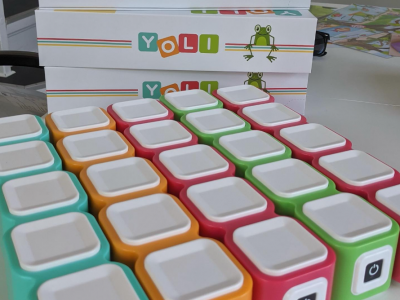My wife’s a huge fan of the Sudoku puzzle, so I thought I would make a mobile app for her. In this post, I’m going to create the Sudoku generator library as a first step to accomplish my main goal. The library will be written in Kotlin and panda is here, just because I found it funny.
I guess that the first thing I should do is explaining the rules of Sudoku. Therefore, if you know them, you can go to the next paragraph without worries. For those who stayed with me here, I have a few pieces of information/rules you should get familiar with:

Before we start, I will describe the algorithm that we will use to make the generator. I divided it into 3 main steps:
Everything we are going to do next, is in my GitHub repository. I will provide you a link at the end of the post.
I encourage you to use Gradle’s Build Init plugin as a tool to produce our library. Below is how you do it in terminal (assuming you already have the Gradle):
$ mkdir sudoku-lib-kotlin
$ cd sudoku-lib-kotlin/
$ gradle init
Starting a Gradle Daemon, 1 busy Daemon could not be reused, use --status for details
> Task :wrapper
Select type of project to generate:
1: basic
2: application
3: library
4: Gradle plugin
Enter selection (default: basic) [1..4] 3
Select implementation language:
1: C++
2: Groovy
3: Java
4: Kotlin
5: Scala
6: Swift
Enter selection (default: Java) [1..6] 4
Select build script DSL:
1: Groovy
2: Kotlin
Enter selection (default: Kotlin) [1..2] 2
Project name (default: sudoku-lib-kotlin):
Source package (default: sudoku.lib.kotlin):
> Task :init
BUILD SUCCESSFUL in 27s
2 actionable tasks: 2 executedAnd that’s it. It cannot be simpler. Now you have everything to start implementing the Sudoku generator algorithm.
Let’s create a file Constants.kt with constants shared in the whole project, just to keep tidiness in our project.
@file:JvmName("Constants")
internal const val GRID_SIZE = 9
internal const val GRID_SIZE_SQUARE_ROOT = 3
internal const val MIN_DIGIT_VALUE = 1
internal const val MAX_DIGIT_VALUE = 9
internal const val MIN_DIGIT_INDEX = 0
internal const val MAX_DIGIT_INDEX = 8
internal const val BOX_SIZE = 3Thanks to @file:JvmName("Constants") you can use any of the constants simply typing e.g. this GRID_SIZE, not ConstantsKt.GRID_SIZE. Here we have sizes of our Sudoku grid and boxes. Also, max and min values for digits used in the puzzle and other useful stuff.
Another helpful file will be enum called Level, which will be indicating Sudoku’s difficulty. Each level has a defined number of digits that should remain in a grid after removal to generate it. I made sure that the names of levels are familiar to you, dear programmers.
enum class Level(val numberOfProvidedDigits: Int) {
JUNIOR(25),
MID(20),
SENIOR(17);
}In the algorithm description, I mentioned checking if the grid is still solvable after each digit removal. To make it possible, we need to implement a solver. It will be a simple, backtracking algorithm. Backtracking is an technique that solves problems recursively. It tries to build a solution piece by piece incrementally. I will go back to that in the right moment to give you an example.
This is the way the Solver works:
We will make an internal object which acts as a singleton. Some things to draw attention to:
internal object Solver {
lateinit var grid: Array
fun solvable(grid: Array) : Boolean {
this.grid = grid.copy()
return solve()
}
private fun Array.copy() = Array(size) { get(it).clone() }
private fun solve() : Boolean {
for (i in 0 until GRID_SIZE) {
for (j in 0 until GRID_SIZE) {
if (grid[i][j] == 0) {
val availableDigits = getAvailableDigits(i, j)
for (k in availableDigits) {
grid[i][j] = k
if (solve()) {
return true
}
grid[i][j] = 0
}
return false
}
}
}
return true
}
private fun getAvailableDigits(row: Int, column: Int) : Iterable {
val digitsRange = MIN_DIGIT_VALUE..MAX_DIGIT_VALUE
var availableDigits = mutableSetOf()
availableDigits.addAll(digitsRange)
truncateByDigitsAlreadyUsedInRow(availableDigits, row)
if (availableDigits.size > 1) {
truncateByDigitsAlreadyUsedInColumn(availableDigits, column)
}
if (availableDigits.size > 1) {
truncateByDigitsAlreadyUsedInBox(availableDigits, row, column)
}
return availableDigits.asIterable()
}
private fun truncateByDigitsAlreadyUsedInRow(availableDigits: MutableSet, row: Int) {
for (i in MIN_DIGIT_INDEX..MAX_DIGIT_INDEX) {
if (grid[row][i] != 0) {
availableDigits.remove(grid[row][i])
}
}
}
private fun truncateByDigitsAlreadyUsedInColumn(availableDigits: MutableSet, column: Int) {
for (i in MIN_DIGIT_INDEX..MAX_DIGIT_INDEX) {
if (grid[i][column] != 0) {
availableDigits.remove(grid[i][column])
}
}
}
private fun truncateByDigitsAlreadyUsedInBox(availableDigits: MutableSet, row: Int, column: Int) {
val rowStart = findBoxStart(row)
val rowEnd = findBoxEnd(rowStart)
val columnStart = findBoxStart(column)
val columnEnd = findBoxEnd(columnStart)
for (i in rowStart until rowEnd) {
for (j in columnStart until columnEnd) {
if (grid[i][j] != 0) {
availableDigits.remove(grid[i][j])
}
}
}
}
private fun findBoxStart(index: Int) = index - index % GRID_SIZE_SQUARE_ROOT
private fun findBoxEnd(index: Int) = index + BOX_SIZE - 1
}Finally, when we have our project prepared (including the Solver), we can proceed to the main part of this post. Above, I already gave you the algorithm on how the puzzle will be generated. So, let me show you the implementation first and then briefly describe it.
import kotlin.random.Random
class Sudoku private constructor(level: Level?) {
val grid = Array(GRID_SIZE) { IntArray(GRID_SIZE) {0} }
private val level: Level = level ?: Level.JUNIOR
init {
fillGrid()
}
fun printGrid() {
for (i in 0 until GRID_SIZE) {
for (j in 0 until GRID_SIZE) {
print(grid[i][j].toString().plus(" "))
}
println()
}
println()
}
private fun fillGrid() {
fillDiagonalBoxes()
fillRemaining(0, GRID_SIZE_SQUARE_ROOT)
removeDigits()
}
private fun fillDiagonalBoxes() {
for (i in 0 until GRID_SIZE step GRID_SIZE_SQUARE_ROOT) {
fillBox(i, i)
}
}
private fun fillBox(row: Int, column: Int) {
var generatedDigit: Int
for (i in 0 until GRID_SIZE_SQUARE_ROOT) {
for (j in 0 until GRID_SIZE_SQUARE_ROOT) {
do {
generatedDigit = generateRandomInt(MIN_DIGIT_VALUE, MAX_DIGIT_VALUE)
} while (!isUnusedInBox(row, column, generatedDigit))
grid[row + i][column + j] = generatedDigit
}
}
}
private fun generateRandomInt(min: Int, max: Int) = Random.nextInt(min, max + 1)
private fun isUnusedInBox(rowStart: Int, columnStart: Int, digit: Int) : Boolean {
for (i in 0 until GRID_SIZE_SQUARE_ROOT) {
for (j in 0 until GRID_SIZE_SQUARE_ROOT) {
if (grid[rowStart + i][columnStart + j] == digit) {
return false
}
}
}
return true
}
private fun fillRemaining(i: Int, j: Int) : Boolean {
var i = i
var j = j
if (j >= GRID_SIZE && i < GRID_SIZE - 1) {
i += 1
j = 0
}
if (i >= GRID_SIZE && j >= GRID_SIZE) {
return true
}
if (i < GRID_SIZE_SQUARE_ROOT) {
if (j < GRID_SIZE_SQUARE_ROOT) {
j = GRID_SIZE_SQUARE_ROOT
}
} else if (i < GRID_SIZE - GRID_SIZE_SQUARE_ROOT) {
if (j == (i / GRID_SIZE_SQUARE_ROOT) * GRID_SIZE_SQUARE_ROOT) {
j += GRID_SIZE_SQUARE_ROOT
}
} else {
if (j == GRID_SIZE - GRID_SIZE_SQUARE_ROOT) {
i += 1
j = 0
if (i >= GRID_SIZE) {
return true
}
}
}
for (digit in 1..MAX_DIGIT_VALUE) {
if (isSafeToPutIn(i, j, digit)) {
grid[i][j] = digit
if (fillRemaining(i, j + 1)) {
return true
}
grid[i][j] = 0
}
}
return false
}
private fun isSafeToPutIn(row: Int, column: Int, digit: Int) =
isUnusedInBox(findBoxStart(row), findBoxStart(column), digit)
&& isUnusedInRow(row, digit)
&& isUnusedInColumn(column, digit)
private fun findBoxStart(index: Int) = index - index % GRID_SIZE_SQUARE_ROOT
private fun isUnusedInRow(row: Int, digit: Int) : Boolean {
for (i in 0 until GRID_SIZE) {
if (grid[row][i] == digit) {
return false
}
}
return true
}
private fun isUnusedInColumn(column: Int, digit: Int) : Boolean {
for (i in 0 until GRID_SIZE) {
if (grid[i][column] == digit) {
return false
}
}
return true
}
private fun removeDigits() {
var digitsToRemove = GRID_SIZE * GRID_SIZE - level.numberOfProvidedDigits
while (digitsToRemove > 0) {
val randomRow = generateRandomInt(MIN_DIGIT_INDEX, MAX_DIGIT_INDEX)
val randomColumn = generateRandomInt(MIN_DIGIT_INDEX, MAX_DIGIT_INDEX)
if (grid[randomRow][randomColumn] != 0) {
val digitToRemove = grid[randomRow][randomColumn]
grid[randomRow][randomColumn] = 0
if (!Solver.solvable(grid)) {
grid[randomRow][randomColumn] = digitToRemove
} else {
digitsToRemove --
}
}
}
}
class Builder {
private lateinit var level: Level
fun setLevel(level: Level) : Builder {
this.level = level
return this
}
fun build() : Sudoku {
return Sudoku(this.level)
}
}
}I decided to give this class a private constructor with Level enum as a parameter and make a Builder as the only way to initialize Sudoku. What is more, in the constructor, I made the difficulty level nullable to let the consumer of the library decide if he wants to set the level in the builder or skip it. If it’s skipped, then the default value JUNIOR is set. Also, I made one public method printGrid(), which I guess I don’t need to explain. Of course, it’s up to you how you would like to consume the lib, so feel free to make adjustments.
Ok, let’s go to the algorithm implementation, which starts in fillGrid() method. It can be divided into 3 parts:
To accomplish our goal set at the beginning of this post, we should publish our project as a library. We will create a jar file and place it in the {projectDir}/build/repository directory. The task is quite simple. There are only a few steps. Let’s add some necessary things in build.gradle.kts. At first, add a plugin in the plugins section that will basically do the job for us.
`maven-publish`Next, add these two lines wherever you want in this script. Of course, change the group name to the same as you set as a project group with gradle init command. Also, it’s up to you which version you type.
group = "org.example"
version = "0.0.1"Then, add the configuration of how Gradle should make the publication.
publishing {
publications {
create("default") {
from(components["java"])
}
}
repositories {
maven {
url = uri("$buildDir/repository")
}
}
}Optionally, you can change the name of the project in settings.gradle.kts script. By default, it’s just the project directory name.
rootProject.name = "sudoku-lib-kotlin"Finally, we are ready to publish the library by typing gradle publish in the terminal in the project directory.
$ gradle publish
> Task :generatePomFileForDefaultPublication
> Task :compileKotlin
> Task :compileJava NO-SOURCE
> Task :processResources NO-SOURCE
> Task :classes UP-TO-DATE
> Task :inspectClassesForKotlinIC
> Task :jar
> Task :publishDefaultPublicationToMavenRepository
> Task :publish
BUILD SUCCESSFUL in 826ms
5 actionable tasks: 5 executedNow, you can check that there is a JAR file in {projectDir}/build/repository directory, which you can use in any other project without implementing the Sudoku generator again. You can create a basic Kotlin project and add our JAR file to external libraries. For example, in Intellij, you can do it here:
File -> Project Structure -> Project Settings -> LibrariesOnce you have done it you will be able to put this code in the main executable method:
Sudoku.Builder().setLevel(Level.SENIOR).build().printGrid()I mentioned before that this is how I wanted my lib to be used:
BuilderLevel setterprintGrid() methodLet’s run it and check the output:
0 0 9 1 0 0 0 0 0
0 0 0 0 0 0 1 0 9
0 5 0 0 9 8 2 0 0
0 0 0 0 0 1 0 4 0
0 0 0 0 0 0 3 0 0
0 0 5 0 3 0 0 0 0
9 0 0 6 0 2 0 0 0
0 0 0 0 0 0 0 0 3
0 0 0 0 0 0 0 0 0The result looks promising. We can see a 9x9 grid with 17 digits different than 0, because of the SENIOR level. The last step would be solving it, but I leave it to you :)
As I mentioned I the project is in my GitHub repository so feel free to check it out: https://github.com/TypicalDevStuff/sudoku-generator
In this post, I showed you how to make a library in Kotlin, which generates the popular Sudoku puzzle. We built it and published it with the help of the Gradle and Maven Publish plugin. We also used a recursive backtracking algorithm to accomplish the implementation of the generator and solver. I guess that I have no choice but to use this library in a mobile application, as I promised. Also, as always, I encourage you to share this post and your thoughts about it below.


